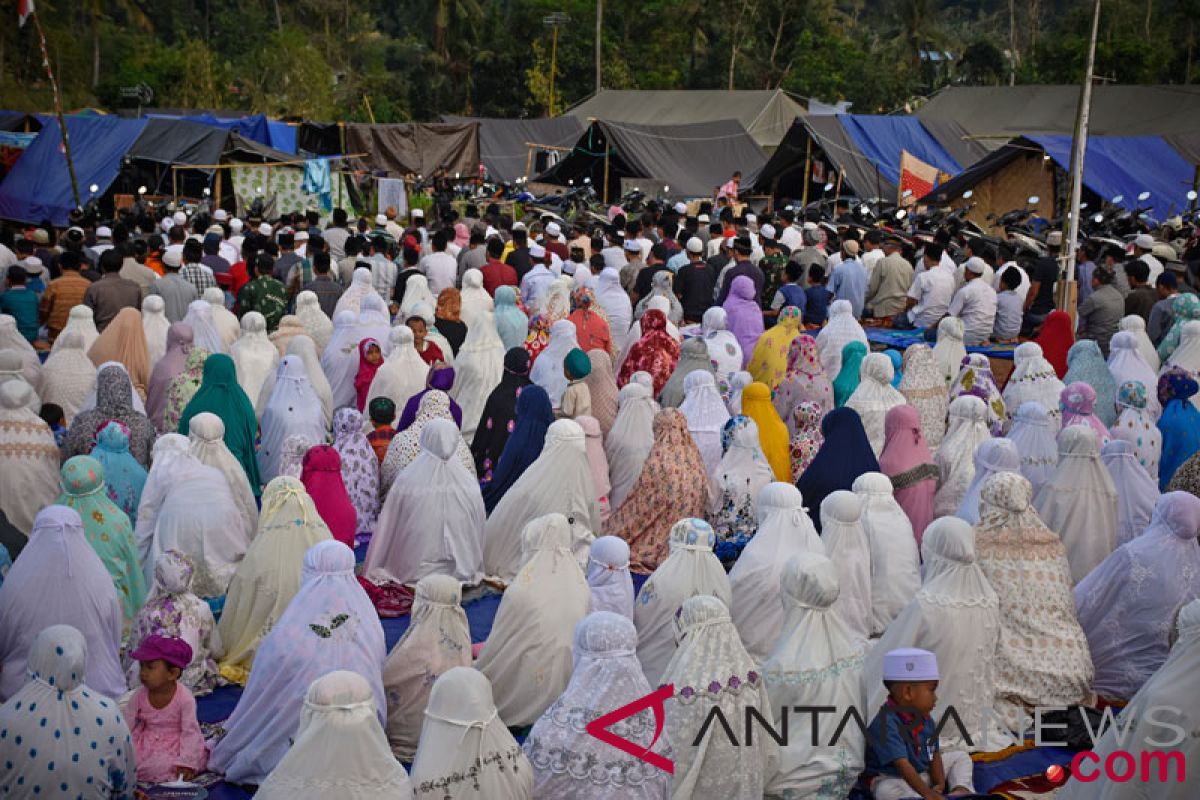The Meteorology, Climatology, and Geophysics Agency have repeatedly issued statements about the recorded aftershocks and newly-recorded earthquakes that again rocked the island.
But, before occurring, no one can actually predict precisely when another deadly quake will again rock the Indonesian island.
The one thing that is for sure, is that the disaster has brought miseries to so many affected people, who have lost their beloved ones or, within seconds, became homeless.
According to the National Disaster Mitigation Agency (BNPB), as of August 23, the strong earthquakes, including the 7.0-magnitude quake that shook Lombok Island on August 5, have killed at least 555 people and caused injuries to 829 others.
The majority of the fatalities were residents of North Lombok District areas, due to their close proximity to the strong earthquake`s epicenter. The repeated earthquakes have also damaged 23,098 houses and forced 134,236 people to be displaced.
Amid the victims, many of the residents seriously affected by the quakes appear to be tough and have accepted their destinies.
Rather than surrendering their fates to the catastrophic condition by just expecting the government and others who, because of certain factors, fail to distribute aid fairly or equally, they instead attempt to get on with their lives.
Sharing the same destiny, many of them have also shown the strength found in the spirit of mutually helping each other.
The Jumain family is one of the examples of those who did not lose hope. Living in Pelolat Hamlet in West Lombok District, Jumain continues his work, in a bid to earn money to feed his wife and children.
Assisted by his beloved wife and several children, Jumain begins his morning by working on the nira, juice of the sugar palm, that he has taken from the flower of the stalk of the areca palm plants, locally called "aren" trees.
The "nira" taken from the "aren" trees available in the back yard of his house, is poured into several bamboo tubes before being transferred into jerrycans.
Shortly after arriving home, the juice of the sugar palm, which has been put into the jerrycans, is poured into a pan.
In order to have cakes of hard brown sugar, Jumain cooks the juice of the sugar palm in a pan that his wife has prepared.
According to Riza Fahriza, Antara Bureau Chief in Mataram, who recently met Jumain, it was not easy to get to the house of this father of four children, though it can be reached by a motorbike in around 30 minutes from West Nusa Tenggara Province`s capital city.
Despite its close proximity to Mataram, the Jumain family`s house is situated near the slope of Batu Layar hill`s steep cliff, and Pelolat Hamlet`s road seems to be more like a footpath, while on the right side of it there is a 100-meter deep ravine.
Therefore, reaching his house in Pelolat Hamlet is challenging because a motorcyclist must stop and move close to the cliff wall every time he or she meets another motorist, to stay clear of the deep ravine, Fahriza said.
"Thank God, the juice of the sugar palm (nira) is always available, so that I can cook it for making the cakes of the hard brown sugar at anytime I need," Jumain said, adding that he sells his hard brown sugar at a local market.
A coconut shell-sized hard brown sugar cake that he makes is sold at Rp25,000 (US$1=Rp14,580). "I do not want to ask an expensive selling price," said the local farmer.
With the small amount of money that he earns from selling the hard brown sugar cakes and several other farming products, he can feed his family members.
"When a string of strong earthquakes shook my village, alhamdulillah (Thank God), we survived and our house still stands," Jumain said.
This difficult life is also felt by quake victims in other parts of Lombok Island. But, the disaster has helped them be strengthened, instead of being weakened.
Many Sembalun Lawang villagers from East Lombok District, for instance, have even shown the goodness of the spirit of mutual help.
On August 21, they were seen working together under the rainfall to prevent puddles from forming in their tents.
"I feel cold enough, but I do not have a choice except preventing my tent from becoming wet," said Arifin, a resident of Sembalun Lawang Village, Sembalun Sub-district, whose house suffered serious damage in the strong quakes.
In preventing their tents from getting wet because of the rainfall, he and his colleagues took several bricks from damaged houses to be used to secure the tents.
Due to the poor condition of the refugee site and changing weather, Arifin said he is very concerned with his health and that of his family members.
In responding to the disaster, the central government has set a target of six months to complete the reconstruction of damaged and destroyed houses.
"(The reconstruction) may start next week. It must be completed in six months` time. The president has ordered the reconstruction (of the damaged houses) after the emergency response period is over," Vice President Jusuf Kalla said.
The Lombok quakes have undoubtedly brought pain and suffering to those affected but, like Jumain and Arifin, many of the survivors remain resilient and choose to face the challenges of life by continuing their livelihoods for rebuilding their futures.
Reporter: Rahmad Nasution
Editor: Otniel Tamindael
Copyright © ANTARA 2018












